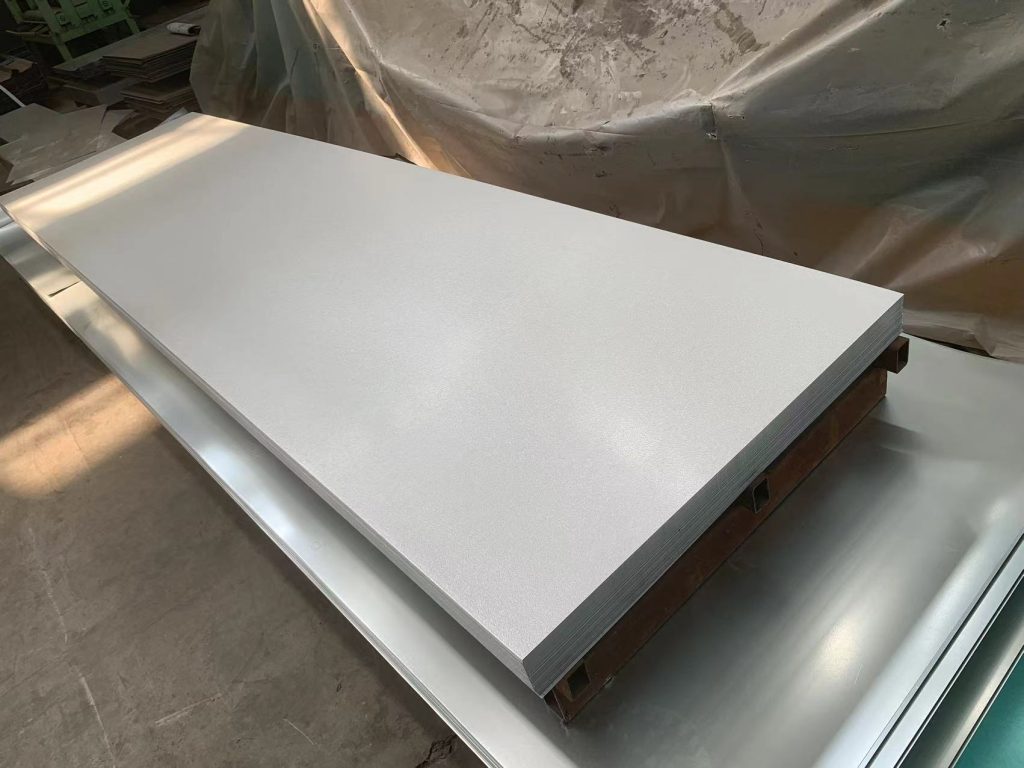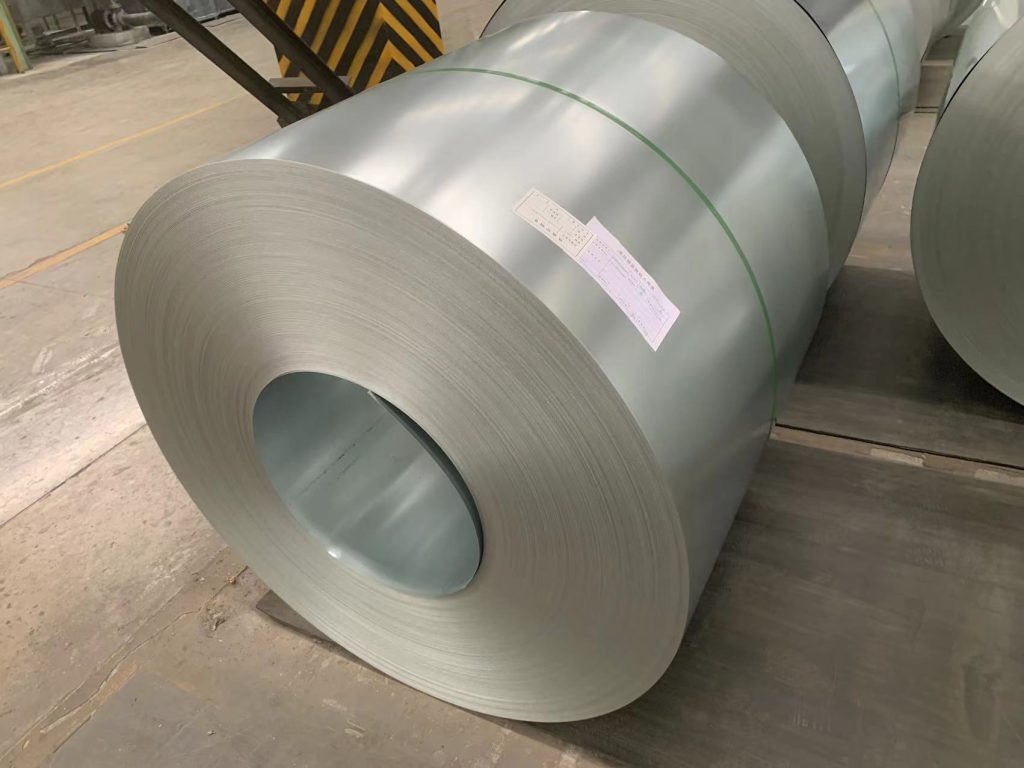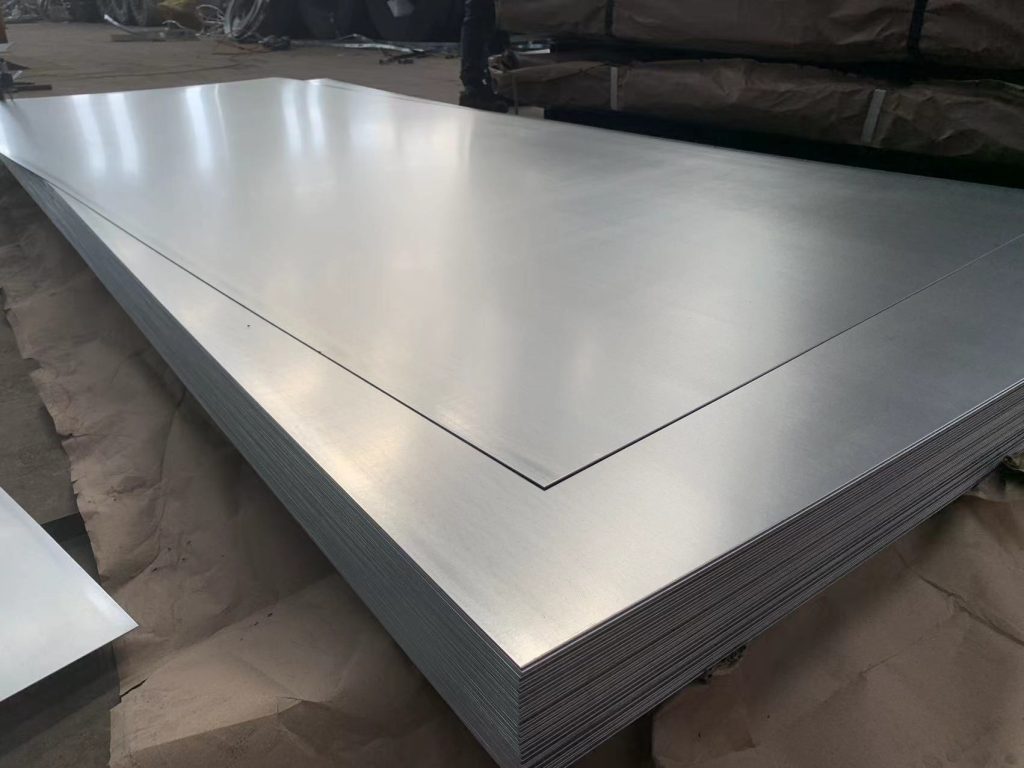Challenges in Welding Galvanized Corrugated Steel
Welders often face challenges when welding galvanized steel due to its chemical properties and reactions when exposed to high temperatures during the welding process. The vaporization of zinc from the coating can cause issues, like porosity. Weakened weld joints. To maintain integrity while working with dipped galvanized steel welders need to be mindful of these reactions. Additionally, the presence of zinc can affect the behavior of the weld pool potentially leading to weld defects if not properly handled.
Chemical Properties and Reactions
The main issue arises from how the zinc coating interacts, with the heat generated during welding activities on steel materials. When galvanized steel gets welded together the zinc layer tends to catch fire resulting in the production of zinc oxide vapor. This vapor formation can potentially impact the weld quality negatively by causing spatter and interfering with the bonding process. Therefore it becomes crucial to manage the heat levels and welding parameters during this process for control. Thus employing techniques is essential to reduce heat input and prevent any reactions, from occurring.
Health and Safety Concerns
Concerns related to health and safety are considerations when working with materials, in welding tasks such, as corrugated steel welding since workers may be exposed to dangerous fumes released during the zinc vaporization process.
Zinc Oxide Fumes
Welders face a health risk from inhaling zinc oxide fumes when welding galvanized steel as it can lead to metal fume fever with symptoms resembling the flu illness which requires utmost attention, for the safety of everyone involved in the welding process.
Protective Gear and Ventilation Requirements
To address the health hazards linked to welding galvanized steel effectively and protect oneself adequately from any harm caused by inhaling fumes during the welding process, such materials as corrugated steel sheets that are galvanized for additional protection against rust and corrosion take place over time as they are exposed to the elements due to sustained use or storage in outdoor environments; it iswelders need to equipselves with proper protective equipment such as respiratory masks designed specifically for filtering out metal particles present, in the fumes released during welding activities and make sure that there is sufficient airflow and ventilation within their workspace to prevent these fumes from accumulating and posing a danger to their well being while they work in confined spaces or areas lacking adequate ventilation measures set up by their employers or themselves.
Pre-Welding Preparations for Galvanized Corrugated Steel
Prior, to welding galvanized corrugated steel sheets effectively handling the issues arising from the zinc coating is crucial.
Cleaning the Surface
Before starting the welding process the first thing you need to do is clean the surface thoroughly. Make sure to get rid of any dirt, oil, or other contaminants to create a base, for a weld penetration. Whether you use cleaning solutions or mechanical techniques the goal is to have a surface from anything that could potentially disrupt the welding process. This crucial step plays a role, in ensuring a bond and successful weld joints.
Removing the Zinc Layer
In some instances, it becomes essential to eliminate the zinc coating from the welding zone to prevent reactions when welding takes place. A couple of approaches for eliminating the zinc layer include using grinding and employing chemical stripping methods.
Mechanical Grinding
When it comes to mechanical grinding for welding preparation work, on zinc-coated surfaces the process entails sandpaper. Grinding away the zinc layer in targeted areas. This technique ensures the elimination of the coating leaving behind a metal surface suitable for welding. Nevertheless, it is crucial to handle this task with care to avoid causing harm to the underlying steel, which demands both expertise and meticulousness.
Chemical Stripping Techniques
You can also use chemical stripping methods to eliminate the zinc layer by applying chemicals that are meant to dissolve the zinc coating instead of mechanical methods, like sanding it off. Remember to follow safety guidelines to prevent any risks associated with chemical exposure while using chemical stripping techniques.
Proper Welding Techniques and Procedures
After finishing the weld tasks successfully in the galvanized corrugated steelwork preparation stage is done and dusted; executing the correct welding methods is key, to producing top-notch weld joints.
Recommended Welding Processes
MIG welding and TIG welding are the two methods often suggested for working with steel materials.
MIG Welding
Metal Inert Gas (MIG) welding is a choice for working with steel because of its flexibility and capability to handle different thicknesses effectively. This technique ensures a supply of filler metal to prevent overheating of the zinc coating. When employing MIG welding on steel projects it’s crucial to make adjustments in voltage and wire feed speed for control over heat input levels.
TIG Welding
Welders often find TIG (also known as Tungsten Inert Gas) welding to be an option, for joining steel together smoothly and with precision in projects that demand exact control and top-notch results. Unlike MIG welding which uses electrodes for bonding metals quickly and efficiently, TIG welding relies on a nonconsumable tungsten electrode to manage heat input with great care and accuracy. While mastering the art of TIG welding may take expertise compared to MIG welding due, to its intricacies it offers the advantage of producing welds especially important in jobs where aesthetics matter.
Managing Heat Input and Control
To ensure quality welds, on galvanized corrugated steel during welding it’s important to control the heat input by adjusting the amperage settings and controlling travel speeds effectively to minimize heat transfer, to the material and prevent zinc vaporization that could affect weld integrity quality of the welds consistently maintaining lower temperatures can also be achieved by using inter pass cooling methods during the welding process.
Post-Welding Treatments
After completing the welding process, for steel joints, it is important to perform weld treatments to improve both the strength and appearance of the welds. Start by inspecting the weld for any imperfections and then thoroughly clean the welded area to eliminate any remaining impurities or oxidation. Moreover, applying galvanization or protective coatings can help regain the corrosion resistance that may have been compromised during welding. These post-weld treatments play a role in extending the lifespan of the welded structure and enhancing its ability to withstand environmental conditions.
In summary, when dealing with corrugated steel it’s important to understand the chemical properties prepare adequately, and use techniques for safe and effective welding. By following the precautions and procedures welders can complete their projects involving materials successfully thus improving the safety and quality of their work significantly.
Cost Considerations for Process Adjustments
Impact on Galvanized Sheet Price
The complexities of welding galvanized corrugated steel can have an impact on the price of the sheets. Welders often need to take steps like removing the zinc coating and using welding methods which can increase the overall cost due to additional labor and time requirements. These alterations not only demand effort but also result in higher usage of items, like grinding wheels and chemical stripping agents. In addition to that point, it is crucial for project budgets to include expenses for purchasing safety equipment and ventilation systems necessary to ensure a work environment during welding tasks.
The pricing of sheets is influenced by factors including market fluctuations in the prices of galvanized materials that are driven by demand and supply chain dynamics which can change over time. Manufacturers and contractors need to consider these cost variations when preparing bids and estimates to account for the added intricacies involved in using steel. Having an understanding of these impacts is crucial for effective project planning and successful implementation.
Product Offerings from Qingdao Sunrise New Material Co., Ltd.
High-Quality Hot Dipped Galvanised Steel Sheets
The Qingdao Sunrise New Material Co. Ltd is famous for its notch-dipped galvanized steel sheets designed to meet diverse industrial demands effectively. These sheets showcase resistance against corrosion due to their zinc coating which guarantees long-lasting performance and durability even in harsh conditions. The company provides a selection of options ranging from 0..3mm to 14mm and widths that vary from 600mm to 2000mm giving customers a choice that perfectly suits their application needs.
Qingdao Sunrise not only offers products but also provides customization options, for their customer’s needs. They can accommodate dimensions and surface treatments, like oil finishes or passivation to meet a variety of requirements. Utilizing technology and high-quality materials ensures that Qingdao Sunrises dipped galvanized steel sheets play a vital role in enhancing the structural strength of the projects they are utilized.
Customization and Durability Features
Qingdao Sunrise New Material Co., Ltd.’s ability to customize products is a highlight of their services; customers can ask for solutions designed to fit their project requirements precisely to improve the material’s performance, for purposes. Additionally, they conduct tests on each sheet to certify its mechanical attributes meet industry norms and satisfy customer needs.
Qingdao Sunrise prioritizes durability in its products by upholding quality control standards during manufacturing processes. The dipped galvanized steel sheets are known for their ability to withstand chemical exposure and environmental damage making them ideal, for a range of uses such, as construction and automotive parts. Customers can trust these materials to deliver performance and lasting results in their projects.









